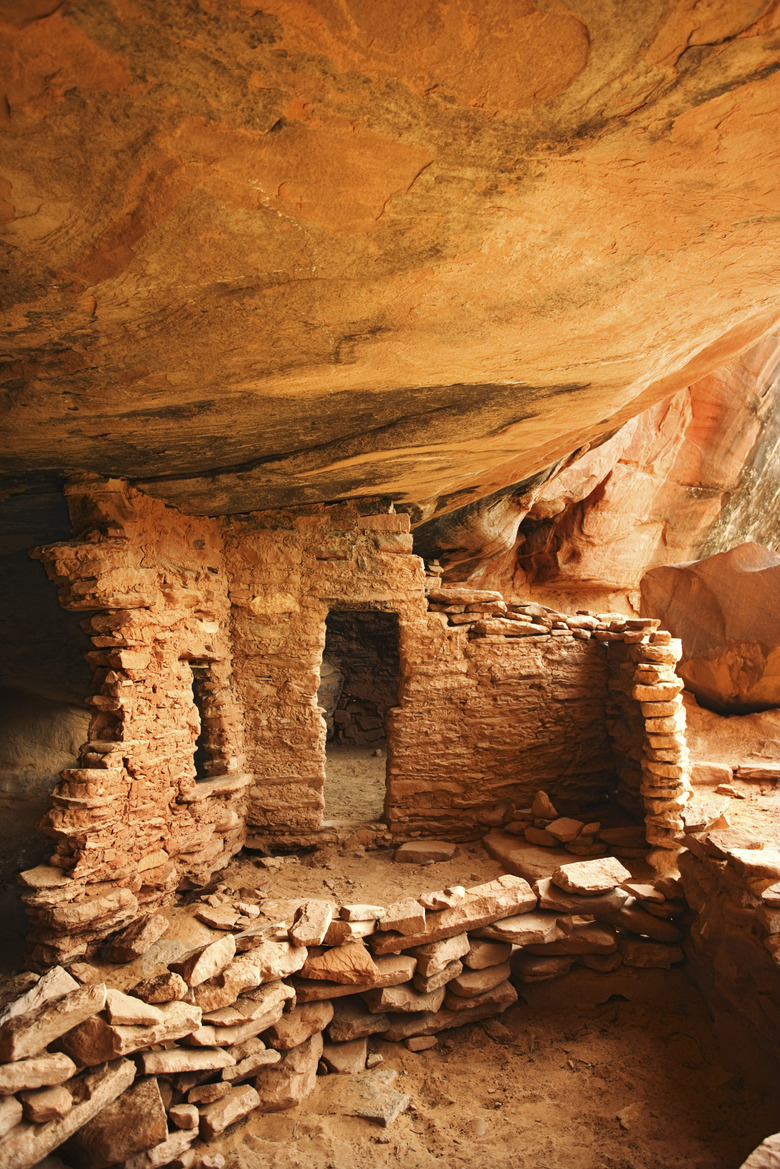Artifacts Of The Anasazi Ancient Indian Tribe
The Anasazi people are Native Americans that lived in Utah, Colorado, New Mexico and Arizona. Artifacts found in this region known as the Four Corners indicate the Anasazi were people who roamed the area from A.D. 200 to A.D. 1300. Their existence coincides with the climatological period known as the Great Drought. Since the Anasazi relied on farming to survive, the lack of fertile growing conditions were the likely cause of their nomadic lifestyle.
Dwellings
Archaeologists have found homes of the Anasazi believed to be from A.D. 500. These homes, called pit houses, were dug halfway into the ground. Tree logs were used as vertical supports and other natural resources such as wood from trees and mud were used to shape the walls. A pit house was built in the round and included a door, or sipapu, in the roof that welcomed visitors and religious spirits. The Anasazi people cooked their food in a fire pit dug in the floor. Built-in places for storage, places to sit and mechanisms to vent smoke from the fire were other amenities found in pit houses.
Pottery
Pottery is a common artifact associated with the Anasazi. Orange or white, they were usually covered with black artistic drawings. These pots were likely used for serving dishes. Plain pots may have been used for cooking or other everyday needs. Images on the pottery provide insight into sub-cultures of the tribe. The location of pottery ruins is an indication of the movement of specific clans. Pictures of the land, religious symbols and other happenings paint the story of their experience.
Religion
Religious images found on artifacts strewn across a vast area shed light on the religious ideals of the Anasazi people. Similar symbols have been found on pottery and other items likely used in religious ceremonies. Masks associated with the Kachina religion were found in connection to Anasazi ruins. Because of these clues, historians have hypothesized that the Anasazi may have been drawn to new religious ideas. Others believe the Kachina religion was not prevalent at this time. Regardless of specific affiliation, the artifacts indicate religion played an important role in Anasazi culture.
Food Storage
Archaeological finds in the southwest indicate the Anasazi focused their efforts on storing food. Known as basketmakers, the Anasazi made ornate baskets to hold food. They created holes in the ground reinforced by rock and covered them with tree branches, sweet grass and sludge made from dirt and water. These pits held crop surpluses. They also served as tombs for their people. The various locations of these artifacts indicate the Anasazi relocated their villages according to the availability of food and climates that accommodated farming.
Cite This Article
MLA
Meier, Dr. Kelly S.. "Artifacts Of The Anasazi Ancient Indian Tribe" sciencing.com, https://www.sciencing.com/artifacts-anasazi-ancient-indian-tribe-15485/. 24 April 2017.
APA
Meier, Dr. Kelly S.. (2017, April 24). Artifacts Of The Anasazi Ancient Indian Tribe. sciencing.com. Retrieved from https://www.sciencing.com/artifacts-anasazi-ancient-indian-tribe-15485/
Chicago
Meier, Dr. Kelly S.. Artifacts Of The Anasazi Ancient Indian Tribe last modified March 24, 2022. https://www.sciencing.com/artifacts-anasazi-ancient-indian-tribe-15485/
